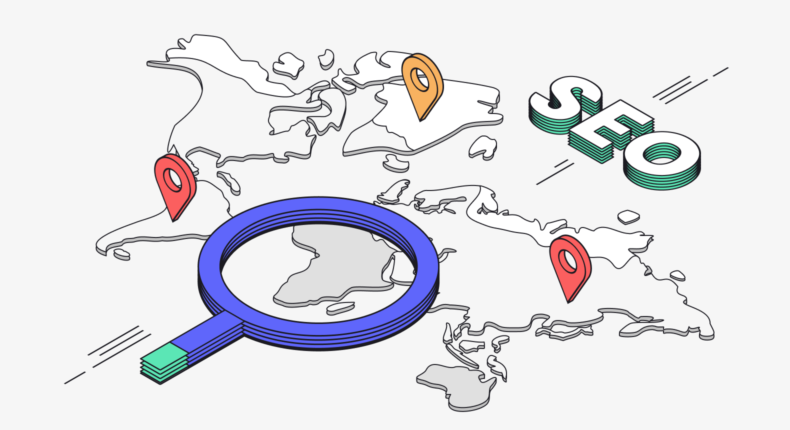Table of Contents
Search engine optimization (SEO) allows businesses to reach a wider audience through high-quality content. As more brands adopt this digital marketing strategy, trends in user behavior continue to reward them.
The majority of website traffic now comes from search engines while the rest comes from sources like Ebay, Wikipedia, and Amazon. And each year, more people around the world gain internet access, widening that potential audience that ecommerce brands can target.
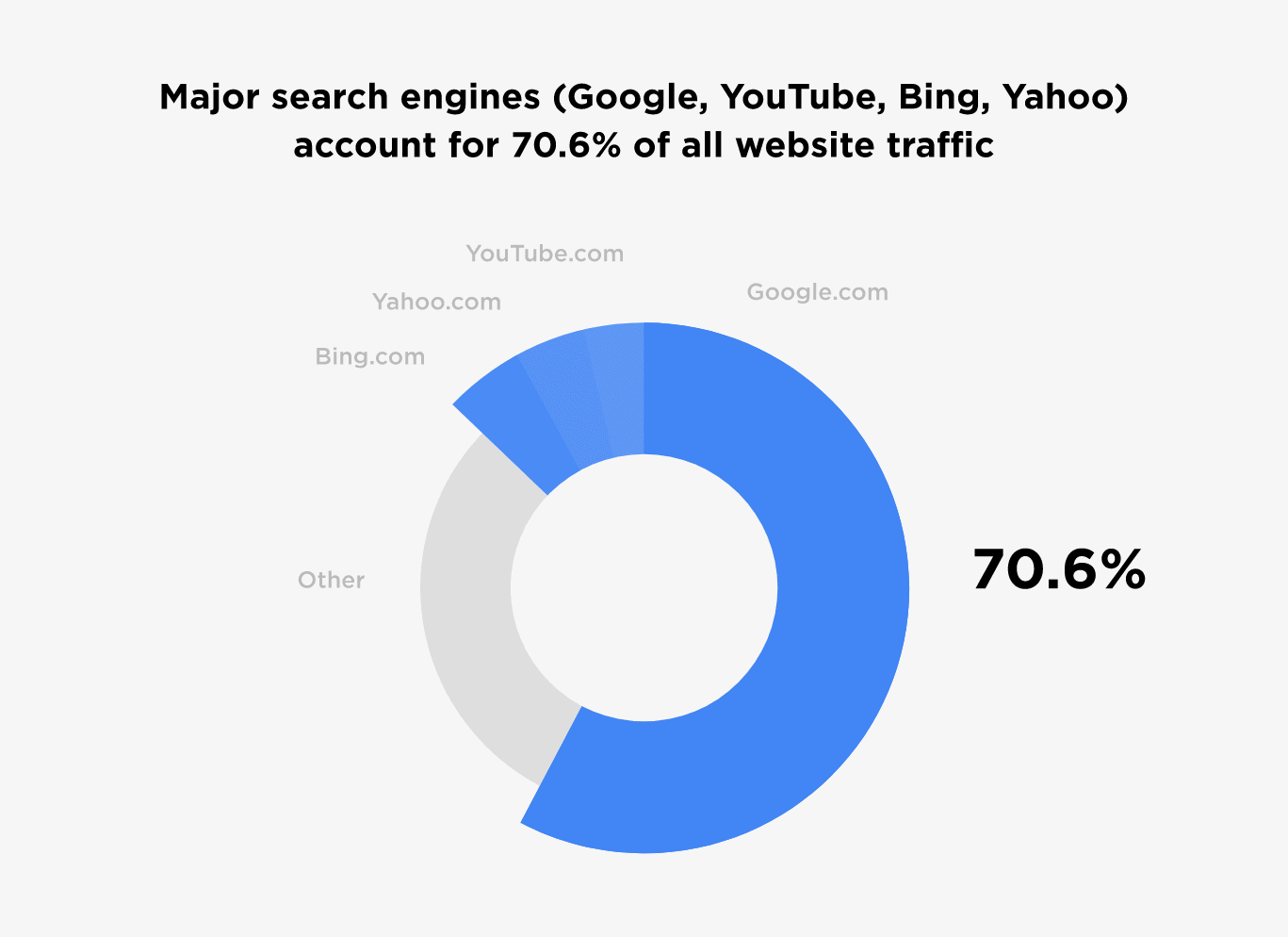
Without global brand recognition like that of Nike, Walmart, or Apple, however, reaching customers in other regions can be tricky for many marketers. As a solution, international SEO helps bridge the gap between a local business and the global online community.
What is international SEO?
International SEO is a marketing strategy that helps brands get their website content in front of search engine users around the world. This approach optimizes for distinct user characteristics like languages and geographical locations, with the goal of improving search engine rankings to drive organic (unpaid) traffic from search engines like Google, Bing, and Yahoo. Implementing marketing techniques that are specific to an untapped audience can increase the likelihood that your content resonates with new users.
When adopting an international SEO strategy, you still want to follow general SEO best practices. Your website should be able to reach users in your immediate area before you branch out into other regions. Having a solid, core SEO approach ensures that technical components and site organization will make your content easy for crawlers to index.
Proven strategies for international SEO
Global internet use is growing each year. This means that brands can expand their potential audience without doing any outreach because there are simply just more users to target.
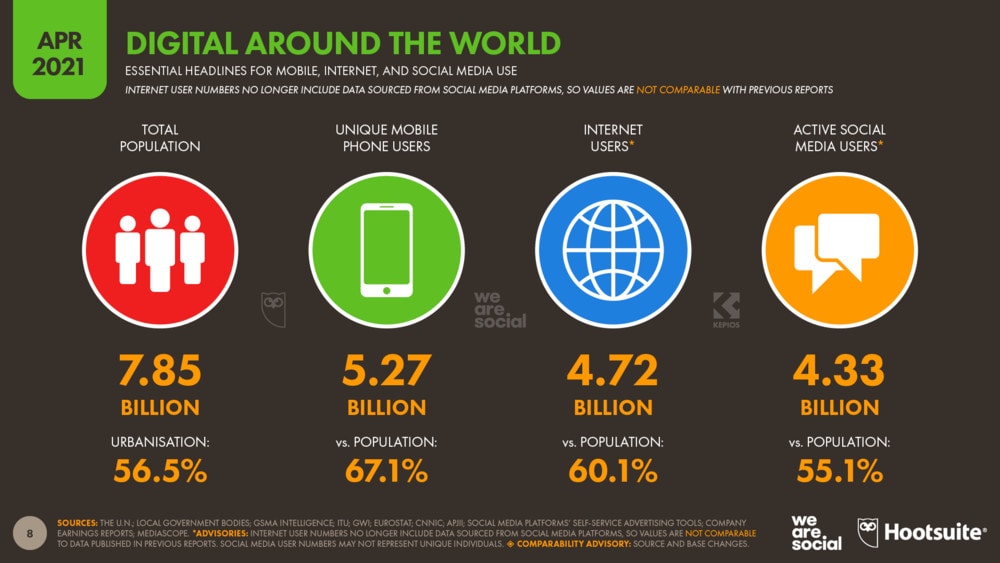
Having the potential audience and reaching it, however, are two different things. Here are some proven strategies for international SEO that will allow you to connect with more users.
Research your markets
International SEO begins with market research. You first need to find out where your best opportunities are:
- Are there specific geographical locations where your industry has more search traffic?
- Is the search volume increasing, decreasing, or holding steady in target regions/countries?
- Do any areas have a better conversion rate than others?
- What is the potential audience size?
- Which locations have the highest click-through rates (CTR)?
Your Google Analytics dashboard has a section labeled “Audience” where you can learn more about your search traffic. This helps you analyze your current audience for opportunities and develop a better international SEO strategy.
Once you’ve identified some potential markets, you need to research the content. Start by searching for some of your top-ranking keywords. Browse through the search engine results pages (SERPs) and look for answers to these questions:
- What language is the content in?
- Are there particular styles or formats that rank higher?
- Does the content include many visuals or is it more writing-based?
- Which pieces of information are included in the meta description and title tag?
- Which keywords receive the most traffic?
- Are there region-specific keywords that use slang terms?
- How long is the content?
As you research, you’ll notice that the top-ranking keywords vary based on market. Things like regional dialects, slang terms/phrases, and cultural differences impact how users type in search queries.
Before you reach a new market, you need to understand it. Each market will be different based upon its geographical location. Your international audience may differ in:
- Language
- Core values
- Ethnic diversity
- Cultural customs
Knowing how people in the target region believe and think will help you optimize your content. That’s because it gives you more insight into their search habits. Peoples’ cultural beliefs and customs impact how they search online and what they hope to find.
Determine a content marketing strategy
You will need a specific content marketing strategy to address the new markets that you’re targeting. Unlike a standard SEO strategy which typically covers one website, your international strategy may include SEO for multiple websites.
One of the biggest decisions is whether or not to create new domains for each country or region in your international approach. Some areas have a higher traffic potential than others. You may decide to devote more resources to those regions. There are several approaches to choose from:
Separate domains: Creating new websites for each target region or country
An example of separate domains would be:
- Granwehr.ca (Canada)
- Granwehr.jp (Japan)
- Granwehr.fr (France)
This approach requires the most time and resources. That’s because you have to create a whole new website entity for each new target market. It is most effective for brands that can scale on a large level.
You will need to monitor the separate domains and build a following from scratch, which includes a new link-building strategy as well. There can be a higher potential payoff if you’re willing to invest in this approach long-term.
Subdomains: Making individual websites housed under a primary domain
An example of subdomains would be:
- De.granwehr.com (Germany)
- Ru.granwehr.com (Russia)
- Uk.granwehr.com (United Kingdom)
Search engines sometimes treat subdomains as separate websites. This means that during the indexing process, Google might crawl and index a web page targeted to German users independent of the primary domain.
This could potentially slow down your international SEO progress as the subdomain would grow slower. Because they are connected to your initial website, however, subdomains are often easier to manage than separate domains.
Targeted web pages: Translating individual pieces of content into different languages.
With this approach, you would simply hire a translator or multilingual staff member to create new web pages in local languages. This is a less expensive option for brands with smaller marketing budgets. It also eliminates the issue of managing multiple sites. It is best to hire a native speaker if possible because it improves the accuracy of your web pages.
Identify which search engines to target
In the United States, Google is the dominant search engine. Across the globe, however, this isn’t always the case. Many countries use foreign search engines to access information.
When you’ve decided which region to target, research its search engine market share. In China, for example, Baidu has the largest presence:

Meanwhile, Russian users get nearly half their information from Yandex:

And Canadian users have a higher Bing usage than American searchers:

You need to make sure that the specific country you want to reach has access to your content. Some quick research will reveal the right search engine to do SEO for and can save you a major headache down the road.
Use hreflang tags for language targeting
Hreflang tags are HTML attributes that tell the search engine what language your website is in. They ensure that users in Mexico, for example, don’t see content written in German. Ahrefs has a great guide for implementing hreflang tags on your website.
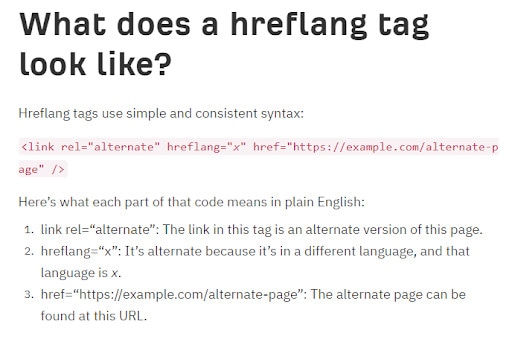
These tags are important for SEO because they improve the user experience. You can use hreflang tags within XML sitemaps, as HTTP headers, or as HTML links in your header.
With a hreflang tag, you greatly reduce the chances that Google shows the wrong content to people in your target country. This improves the accuracy of your geo-targeting approach and can lead to higher rankings in the international markets where you want to earn more traffic.
You can also use them in conjunction with canonical tags for SEO. This helps when you have duplicate content across your international URLs.
Optimize URL structure
Having an optimized URL structure is an important part of successful international SEO. Webmasters have a couple of options when it comes to URL organization:
Subdomains
A separate portion of a website with its own hierarchy. (EX. uk.granwehr.com)
Overall, subdomains don’t provide the ideal URL structure for international SEO. This is because search engines often treat them as separate websites. Within the SEO community, there is much debate about whether Google actually considers subdomains and subdirectories on the same level.
Subdirectories
URLs that exist as subfolders within the root domain. (EX. granwehr.com/uk)
The good thing about subdirectories is that they keep all your content under the same domain name. In the long run, you may have better domain authority, but your target audience may prefer accessing content from local websites instead.
Country code top-level domains (ccTLDs)
URLs that include a country code that tells the search engine where the domain is registered. (EX. granwehr.co.uk)
This approach works very effectively for international search. The downside is that each URL will have separate domain authority, which can dilute your country targeting metrics. Some ccTLDs are treated like generic top-level domains (gTLDs). These include URLs like .co and most likely won’t affect your website.
You can use Google Search Console to compare domains for international websites and other foreign competitors in your target market. What is the URL structure of top-ranking websites? This may help you decide on your own approach.
Follow local laws and regulations
Each country has different cybersecurity laws that you must follow. Violations of these laws can devastate your SEO efforts and lead to hefty fines.
One of the best examples is the European Union’s recent legislation to protect user data. The General Data Protection Regulation (GDPR), requires any websites that have European visitors to disclose several data policies upfront. The legislation took several years to pass and went into effect in May 2018.
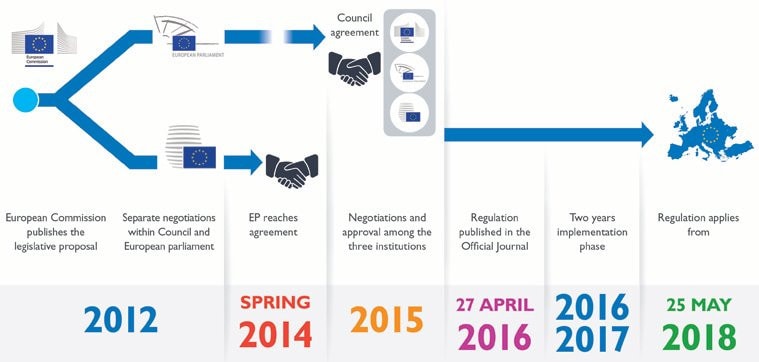
This means that if you have web pages or domains in German, French, Spanish, etc., you have to make sure you’re in compliance.
In Australia, the government nearly shut down Google after it initially refused compliance with new content distribution laws. Eventually an agreement was made, but there are bound to be more instances like this. Whether you’re marketing to users in Spain, Canada, Taiwan, Brazil, or anywhere in between, you need to make sure you know the local privacy laws and regulations.
Optimize local factors
Details make your website stand out. Once you’ve translated, tagged, and organized your web pages, it’s important to consider your audience on a deeper level.
Localization of your web content is especially important if you have brick-and-mortar stores in different countries. Some of the factors you should optimize for include:
- Publish in local currencies.
- Provide local name, address, phone number (NAP) information.
- Develop location-specific social media content.
- Follow the local dialect. This includes optimizing for British English even if your content is already written in American English.
- Earn backlinks from regional industry leaders.
- Do keyword research in the target area.
- Host your website on a local IP address
With these and other local SEO techniques, you can establish your brand as a major competitor in international markets. At the same time, you’ll also build trust with users in the region and appear more credible.
Get a complimentary SEO audit
International SEO builds your online visibility by expanding your potential audience. Through improvements in your site structure, implementation of localized SEO techniques, and creation of regionally-relevant content, you can win over customers in new areas without building expensive operations overseas.
Want to see how you’re doing with SEO? Get an instant SEO audit below. Or, schedule a free consultation to see how intent SEO can boost search traffic revenue by 700%.
